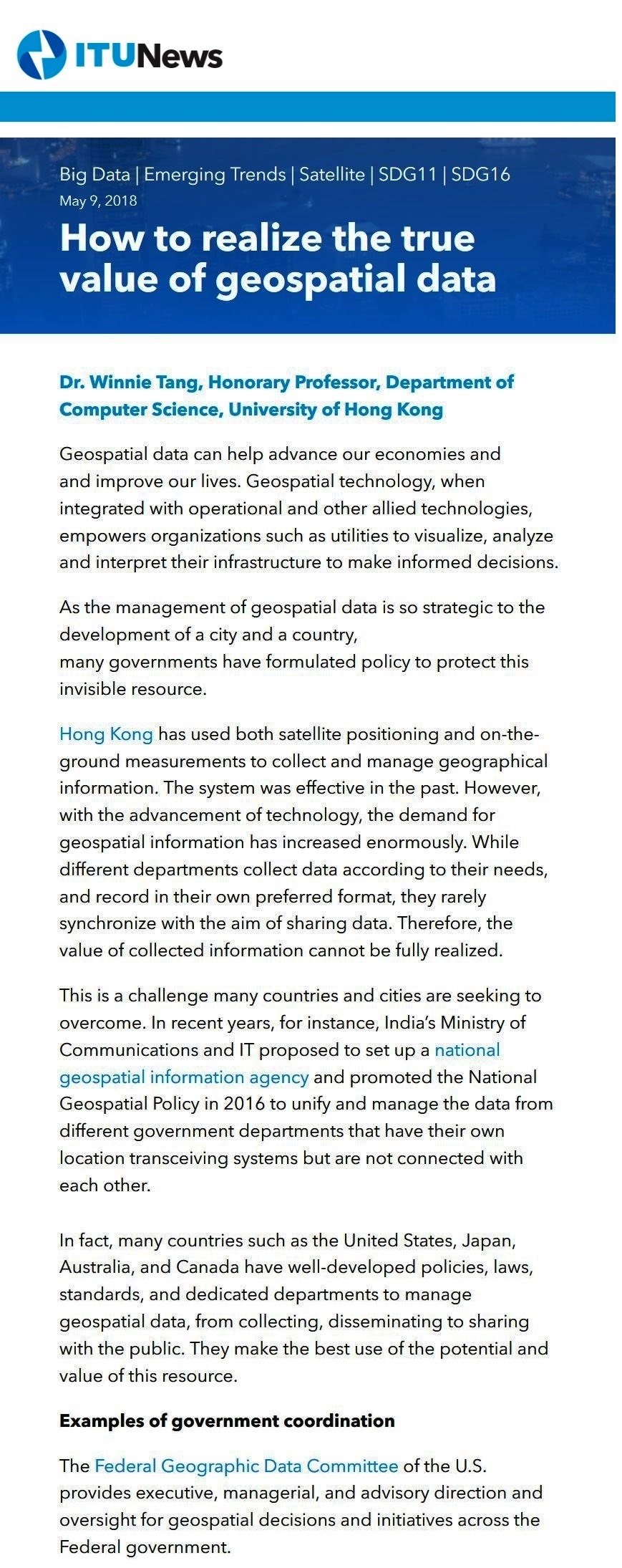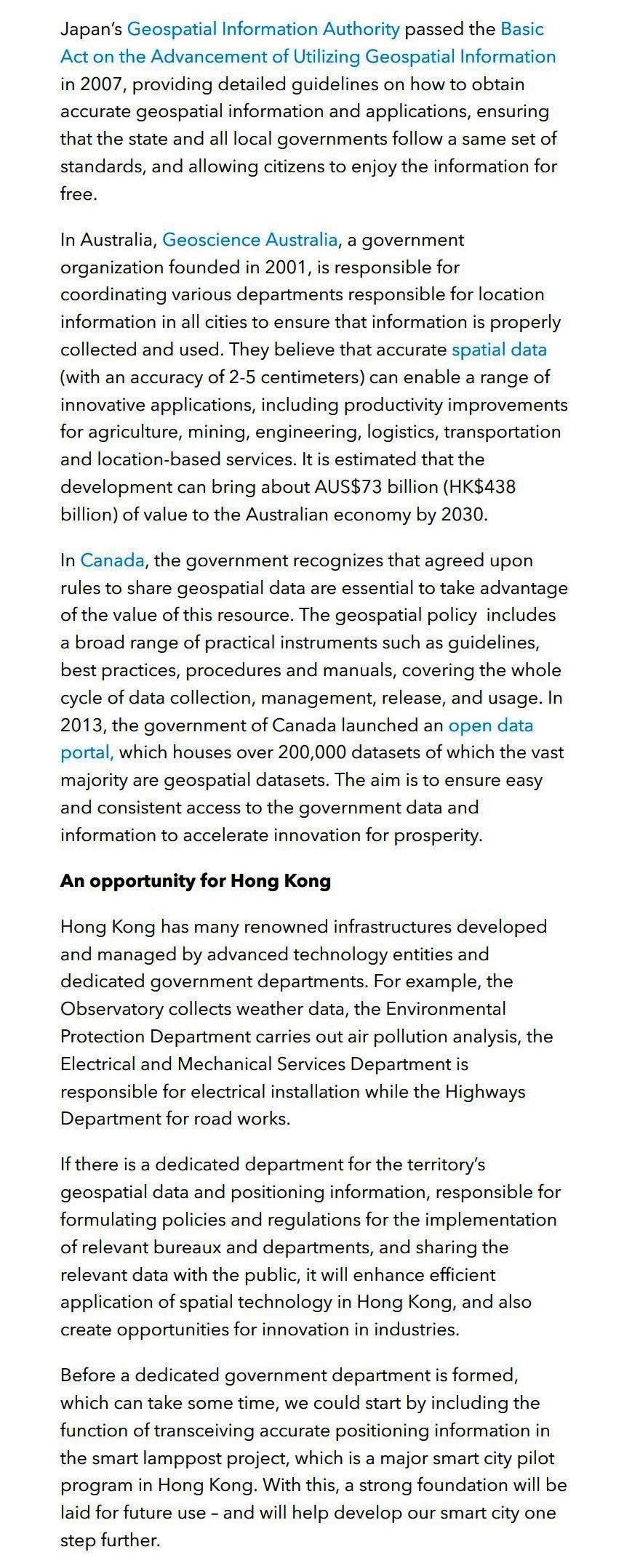網上版請按此


How to realize the true value of geospatial data
Geospatial data can help advance our economies and and improve our lives. Geospatial technology, when integrated with operational and other allied technologies, empowers organizations such as utilities to visualize, analyze and interpret their infrastructure to make informed decisions.
As the management of geospatial data is so strategic to the development of a city and a country, many governments have formulated policy to protect this invisible resource.
Hong Kong has used both satellite positioning and on-the-ground measurements to collect and manage geographical information. The system was effective in the past. However, with the advancement of technology, the demand for geospatial information has increased enormously. While different departments collect data according to their needs, and record in their own preferred format, they rarely synchronize with the aim of sharing data. Therefore, the value of collected information cannot be fully realized.
This is a challenge many countries and cities are seeking to overcome. In recent years, for instance, India's Ministry of Communications and IT proposed to set up a national geospatial information agency and promoted the National Geospatial Policy in 2016 to unify and manage the data from different government departments that have their own location transceiving systems but are not connected with each other.
In fact, many countries such as the United States, Japan, Australia, and Canada have well-developed policies, laws, standards, and dedicated departments to manage geospatial data, from collecting, disseminating to sharing with the public. They make the best use of the potential and value of this resource.
Examples of government coordination
The Federal Geographic Data Committee of the U.S. provides executive, managerial, and advisory direction and oversight for geospatial decisions and initiatives across the Federal government.
Japan's Geospatial Information Authority passed the Basic Act on the Advancement of Utilizing Geospatial Information in 2007, providing detailed guidelines on how to obtain accurate geospatial information and applications, ensuring that the state and all local governments follow a same set of standards, and allowing citizens to enjoy the information for free.
In Australia, Geoscience Australia, a government organization founded in 2001, is responsible for coordinating various departments responsible for location information in all cities to ensure that information is properly collected and used. They believe that accurate spatial data (with an accuracy of 2-5 centimeters) can enable a range of innovative applications, including productivity improvements for agriculture, mining, engineering, logistics, transportation and location-based services. It is estimated that the development can bring about AUS$73 billion (HK$438 billion) of value to the Australian economy by 2030.
In Canada, the government recognizes that agreed upon rules to share geospatial data are essential to take advantage of the value of this resource. The geospatial policy includes a broad range of practical instruments such as guidelines, best practices, procedures and manuals, covering the whole cycle of data collection, management, release, and usage. In 2013, the government of Canada launched an open data portal, which houses over 200,000 datasets of which the vast majority are geospatial datasets. The aim is to ensure easy and consistent access to the government data and information to accelerate innovation for prosperity.
An opportunity for Hong Kong
Hong Kong has many renowned infrastructures developed and managed by advanced technology entities and dedicated government departments. For example, the Observatory collects weather data, the Environmental Protection Department carries out air pollution analysis, the Electrical and Mechanical Services Department is responsible for electrical installation while the Highways Department for road works.
If there is a dedicated department for the territory's geospatial data and positioning information, responsible for formulating policies and regulations for the implementation of relevant bureaux and departments, and sharing the relevant data with the public, it will enhance efficient application of spatial technology in Hong Kong, and also create opportunities for innovation in industries.
Before a dedicated government department is formed, which can take some time, we could start by including the function of transceiving accurate positioning information in the smart lamppost project, which is a major smart city pilot program in Hong Kong. With this, a strong foundation will be laid for future use – and will help develop our smart city one step further.
Dr. Winnie Tang
Honorary Professor, Department of Computer Science, University of Hong Kong